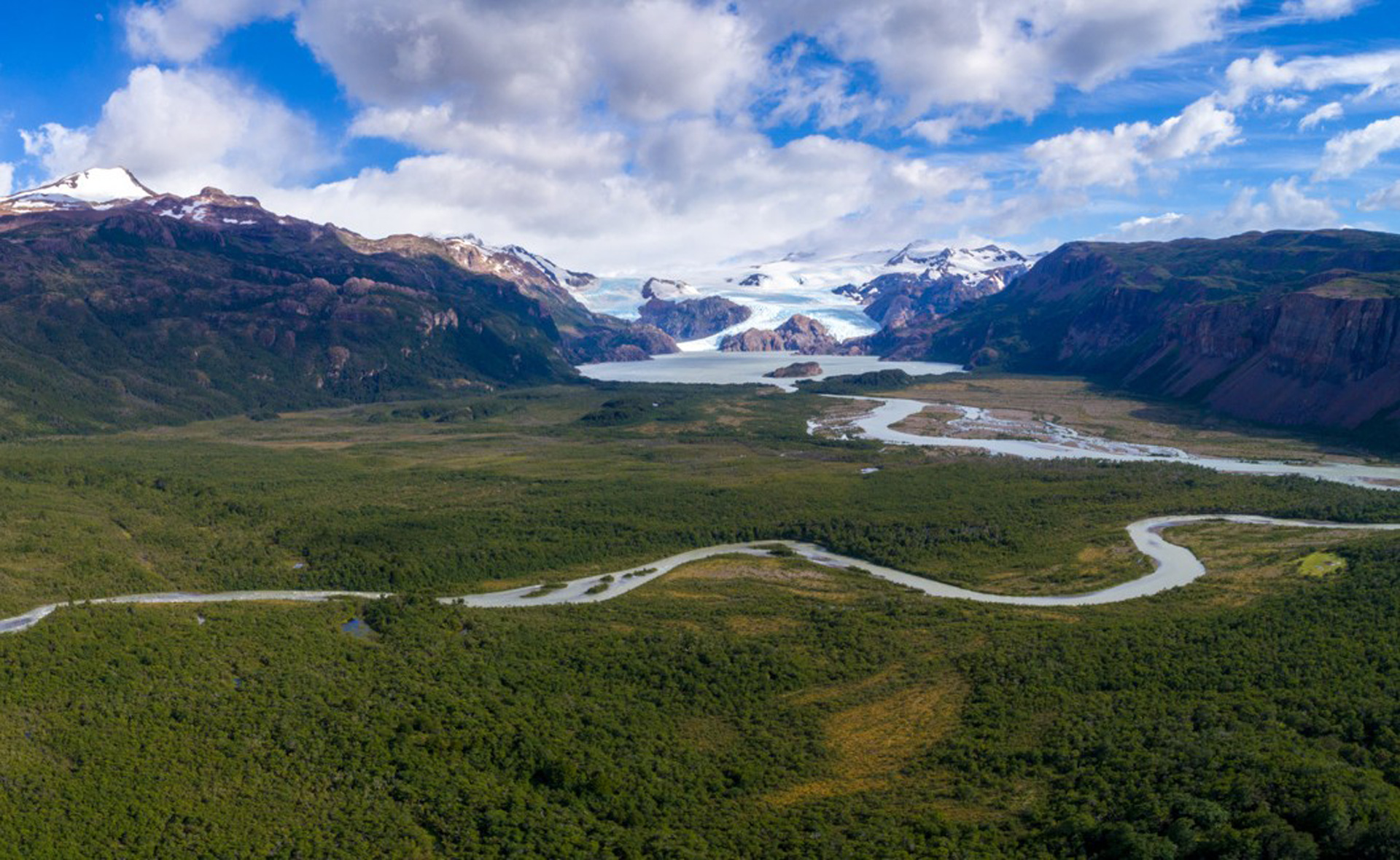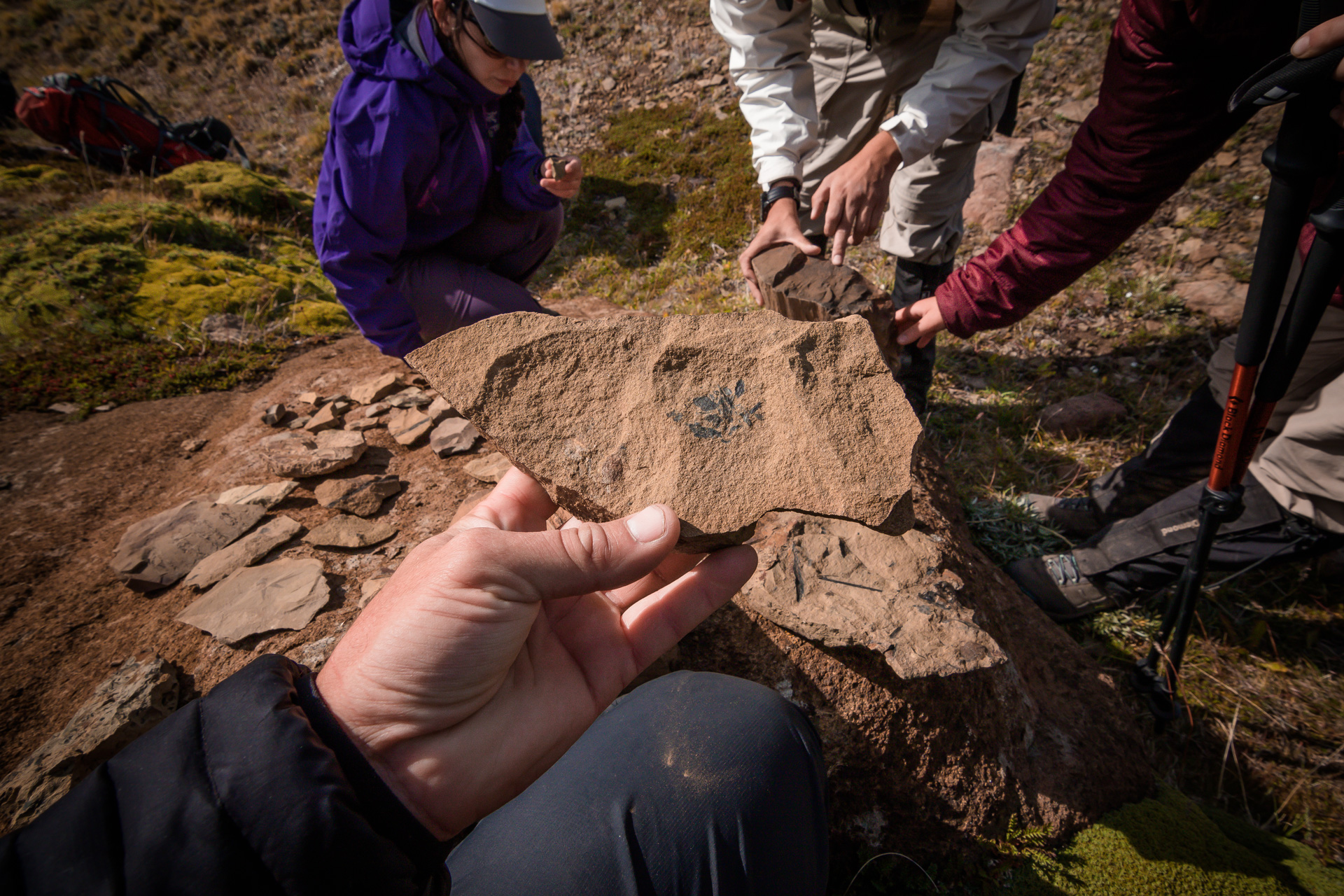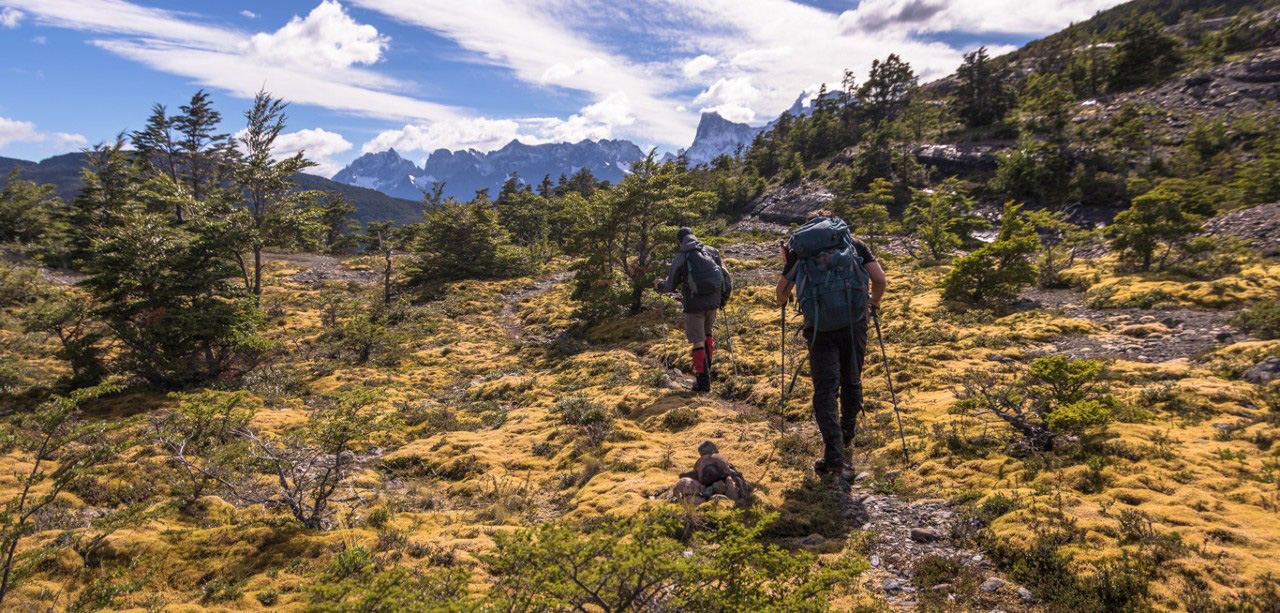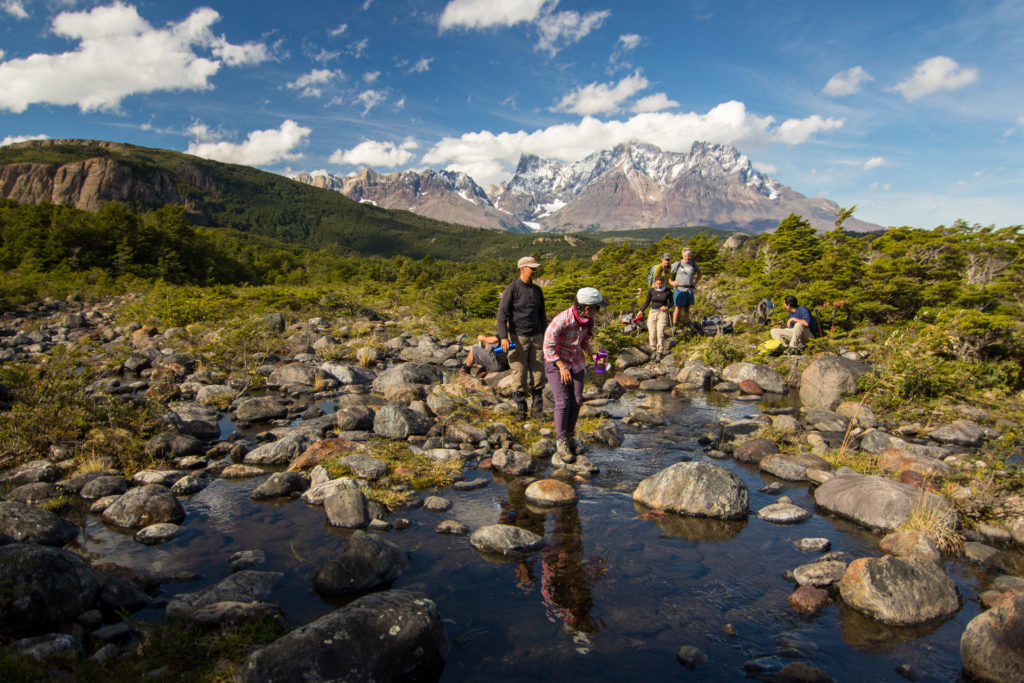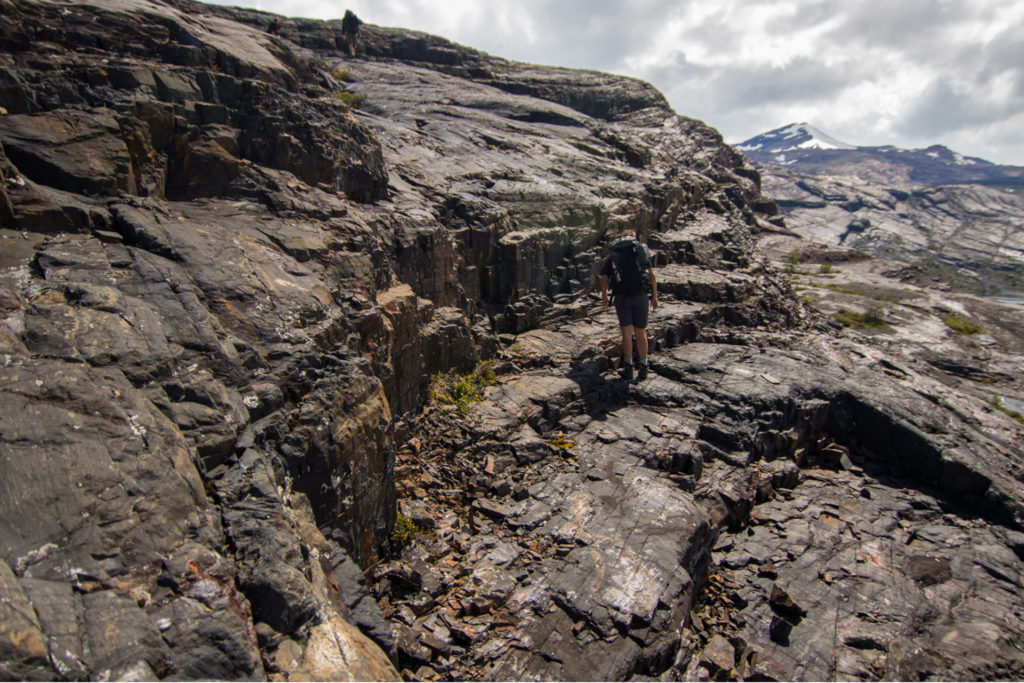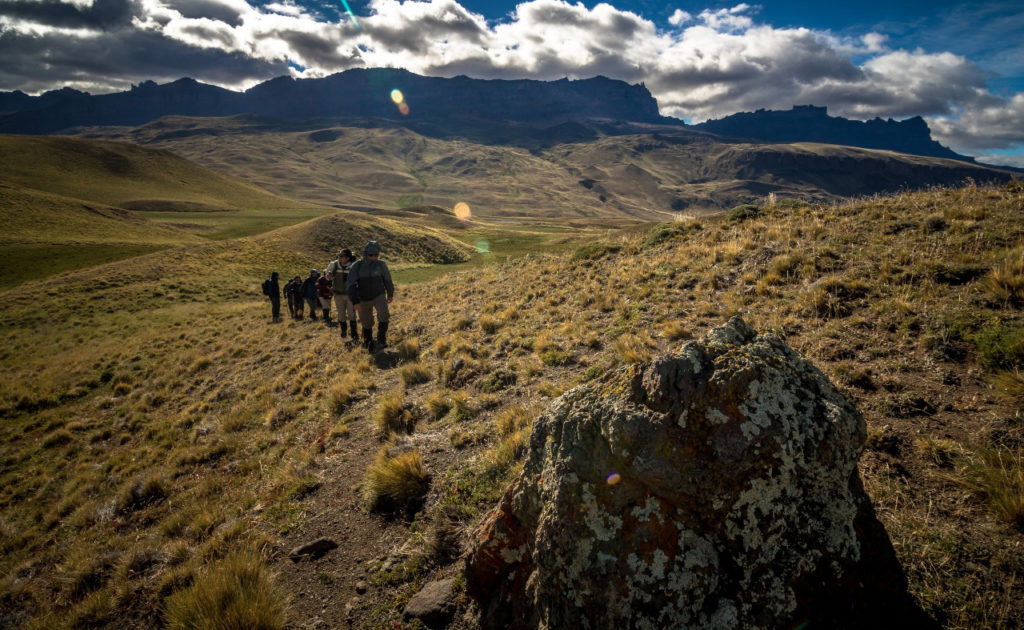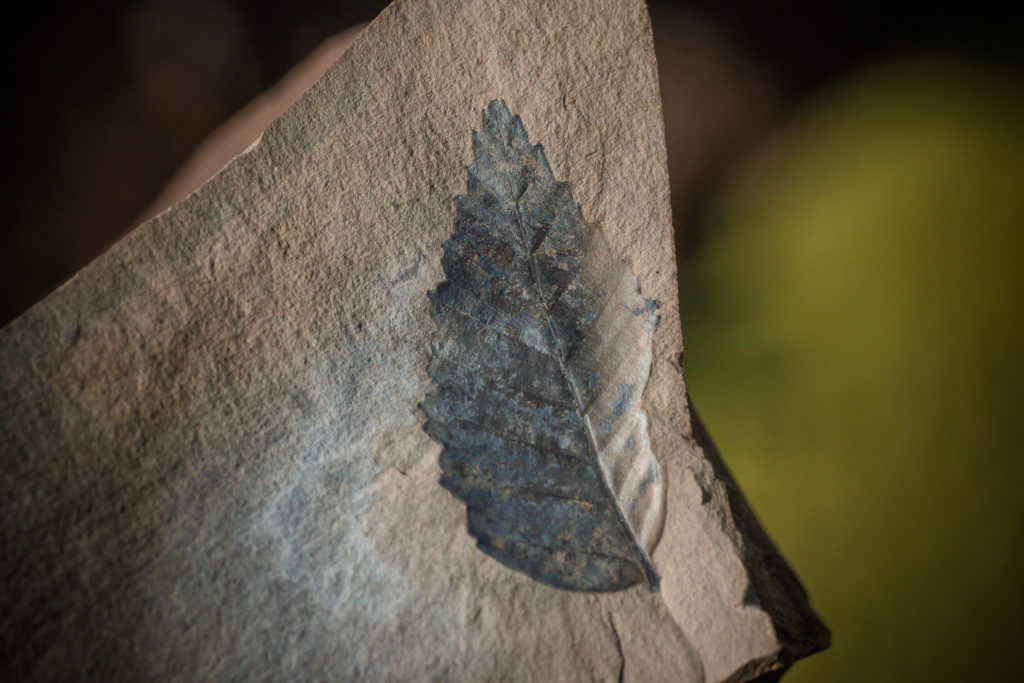Trekking in Zapata Valley
Torres del Paine, Patagonia, Chile
Remote 6-day trek in Chilean Patagonia hunting for fossils
Escape the crowds in Torres del Paine National Park on a trek through Southern Patagonia’s most secluded, unspoiled landscapes found only in the Zapata Valley. Few places can match the mystical beauty of this isolated valley and mountain range unique of its kind in Patagonia. Quiet trails and unique formations now fill this untouched region of valleys and canyons which were once covered by oceans teaming with life. Exploring this remote area takes hikers back in time alongside million-year fossils accompanied by striking views and endless history. Here, paleontology is very much alive and evidence of Patagonia’s prehistoric life awaits. Any visitor who comes to explore this fascinating region leaves with amazement.
This exclusive journey is part of the Route of the Parks of Patagonia which connects 17 national parks throughout Chile.
-
Location
Torres del Paine, Patagonia, Chile
-
Distance
102km
-
Duration
6 Days
-
When to go
October - April
-
Sleeping
Camping
-
Permit required
Certified local guide with permission from CONAF
Highlights
- Trekking to the summit of Cerro Zapata (1590m)
- Wild, untouched trekking & camping experience
- Searching for fossils in the Sierra Baguales
- Visiting Tyndall Glacier – getting close to one of the largest glaciers in the Southern Patagonian Ice Field
History
The Zapata Valley in Torres del Paine National Park in Southern Patagonia holds hidden valleys and canyons where paleontology is very much alive and evidence of Patagonia’s prehistoric life awaits. This region was once the bottom of the sea for more than 50 million years, and today – this incredible route uncovers marine & plant fossils with more than 50 million years of history. Backpacking excursions through this rarely visited, remote valley uncovers 46 Ichthyosaurus fossils, a dolphin-like “fish lizard” that lived 245 million to 90 million years ago during the Mesozoic Era. These marine reptiles from the Cretaceous period were discovered by a team of glaciologists just recently in 2004.
The Ichthyosaurus graveyard in this section of Torres del Paine contains some of the world’s most significant fossil finds from this period and can be seen as if etched into the rock itself. Adult and embryo specimens are present, showing the remains of what is likely a pack that was entombed by catastrophic mudflow that rushed into the underwater canyons they hunted. As backpackers explore the steppes and valleys dotted with thousands of ancient fossilized leaves, they uncover part of Patagonia’s precious paleontology. This exclusive trek is now part of the Route of the Parks of Patagonia, a scenic route running 2,800 kilometres between Puerto Montt and Cape Horn, spanning 17 national parks, and protecting 28 million acres of Chilean Patagonia. The Zapata Valley and its neighbouring mountain range, Sierra Baguales, are protected by private initiatives which seek to place the important geological and paleontological resources of this area as a central focus of conservation
The Trek
This remote 6-day trek in Chilean Patagonia explores the hidden Zapata Valley – the most ancient valley in Torres del Paine National Park which lies west of Grey Lake and north of the Pingo Valley; far from the park’s more popular and commonly crowded trails. Weaving through secluded valleys, grassy steppe and along undulating slopes – this relatively unknown trail explores ancient canyons in search of fossilized remains & prehistoric life. Hiking through this extraordinary valley is a long but non-technical trek requiring hikers to interact closely with the landscape: traversing through Subantarctic forests, crossing pristine glacial rivers, and bouldering across huge rocks carved out by the glaciers’ ancient movements.
The highlight of this trek, apart from the endless fossils encountered throughout, is hiking to the summit of Cerro Zapata (1590 m) which provides 360° views of fantastic Patagonian scenery: endless lakes, glaciers, mountain ranges and the breathtaking Southern Patagonian Ice Field. The summit of Cerro Zapata is a particularly wonderful lookout for the Glaciers Zapata, Grey, Tyndall, Geike, Pingo, Olguín (and others still unexplored!) which are laid out below you alongside the glacial lakes they give birth to.
This is an extremely unfrequented valley and trekkers will experience the peace of trekking alone, accompanied only by stirring scenery, and (if lucky) the watchful gaze of the foxes, guanacos, woodpeckers and huemuls (the elusive Andean deer) that live here.
When to go
Spring (September-November) in Patagonia is quite chilly with strong winds, cold nights, and a strong possibility of rain as the season transitions into summer. Temperatures likely range between 3-7 degrees Celsius and highs around 14-18 degrees Celsius.
The summer season in the Southern hemisphere (December through February) is the peak season for travel and tourism in this backpacking mecca of Patagonia. These months generally consist of warmer days (17-20 degrees Celsius) and cooler nights with temperatures ranging between 6-8 degrees Celsius. Weather in the summer season is typically more erratic and changes frequently throughout the day. On a typical spring or summer day in Patagonia, one can experience all 4 seasons in one day including heavy winds, rain or snow, and strong sun! Summer days receive about 14-17 hours of daylight.
In fall (March-May) the weather is much more stable meaning less wind and rain as days begin to get cooler preparing for the winter months (June – August). Days become cooler with the possibility of rain or snow later in the season the days begin to grow shorter (7-13 hours of daylight depending on the month).
Access
The Zapata Valley is only accessible during Patagonia’s high season (October – April) with a certified local guide who has permission from CONAF, the country’s forest management, to enter this area. CONAF takes extra measurements to ensure that this area is protected and that only small groups accompanied by a certified guide hike through this area.
Costs
This particular program with Chile Nativo consists of several logistics to be sure the excursion is successful. The price of the program includes all private transportation beginning from Puerto Natales on the first day until the last day of the program returning back to Puerto Natales. A certified bilingual paleontology guide accompanies guests throughout the 6-day program including the briefing which is held the day before the program’s start. Park entrance fees and all meals – breakfast, box lunch, and dinner – are included each day (with the exception of breakfast on day 1 and dinner on day 6). Program exclusions include flights, additional nights before or after the excursion, and personal travel/medical insurance. Sleeping bags, mats, and trekking poles are also not included but may be rented from Chile Nativo prior to the excursion.
Accomodation
This particular journey is a remote and secluded trek that goes well off the beaten path in a place without modern facilities. For three nights, backpackers will stay at the Zapata Campsite under the vast Patagonia sky in a shared 4-season tent (or single tent if preferred for an additional cost). Here, meals are prepared in a backcountry setting and shared together at each day’s end. Open fires are not permitted in the national park due to Patagonia’s notoriously high winds and the potential risk of a wildfire. The last 2 nights of the program are spent at La Casa Museo, or museum house, located at a local estancia (ranch) in Sierra Baguales, about 1 hour outside of the national park. During these 2 nights, backpackers will stay in a rustic, fully-equipped ranch home with hot showers and electricity run by a generator. The ranch home has a full kitchen and wood-burning stove to keep warm during chilly Patagonia nights. The simple home has comfortable mattresses in a common sleeping area with liners and pillows, but no sheets or blankets. This remote home offers guests an authentic experience staying in the Patagonia steppe under its immense changing skies
Gear
All camping gear is provided to backpackers during this trek with Chile Nativo including tents (double occupancy), food, compact cooking utensils, portable camping chairs, and a portable camping toilet. The camping gear, food and cooking utensils must be shared among the group and each person will carry in total between 17 – 20 kgs (34 – 44 Lbs). Each group will have a porter who cooks meals each night and who will transport the portable camping toilet to the base camp. Trekking poles and gaiters are highly recommended for this excursion since this route explores rocky slopes and includes glacial river crossings.
Useful links:
Chile Nativo – Hunting for fossils (6-day trek)
More Adventures like this
-
The Thorsborne Trail on Hinchinbrook Island, Queensland, is rated as one of the best multi-day hikes in Australia, and features in Lonely Planet’s “Epic Hikes of The World.” Just a few hours dri...
Thorsborne Trail
Hinchinbrook Island, QLD
-
Australia's most famous multi-day hike, the Overland Track is 65 km, six-day trek through the heart of the Cradle Mountain-Lake St Clair National Park.
The Overland Track
Tasmania
-
The Larapinta Trail is one of Australia's finest walks, situated just out of Alice Springs and spanning 223kms across the West MacDonnell Ranges.
Larapinta Trail End to End
Central Australia







